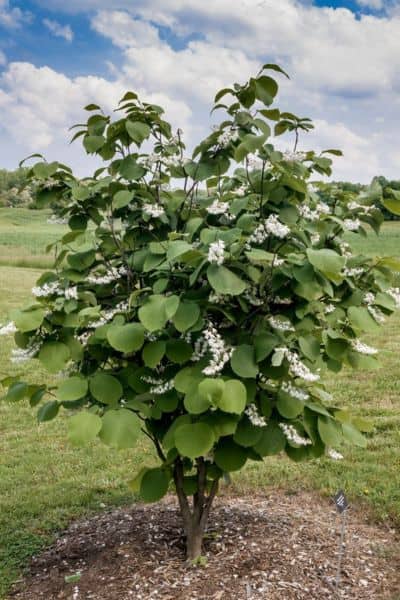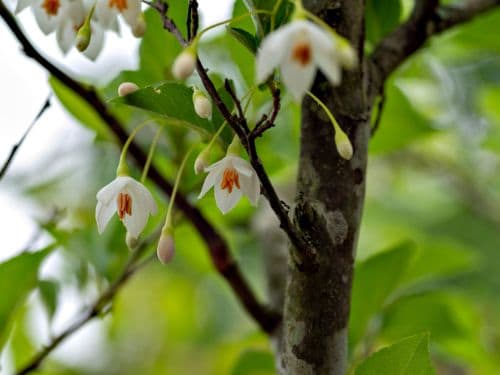Snowbell, scientifically known as Styrax, is a captivating and elegant addition to garden landscapes, renowned for its beauty and delicate features. The name “Snowbell” aptly describes the tree’s pendulous clusters of bell-shaped flowers, which drape elegantly from its branches during the blooming season. Originating from various regions across Asia, Europe, and North America, Snowbell has established itself as a sought-after tree that graces gardens with its enchanting blooms and graceful form.

Growing And Caring For Snowbell
Cultivating a Snowbell tree involves providing the right environment and care to ensure its optimal growth and the development of its enchanting features. When planting a Snowbell, choose a location with well-drained soil and ample sunlight. While these trees can tolerate partial shade, they generally thrive in full sunlight, enhancing the production of their iconic flowers.
Snowbell trees exhibit a preference for well-drained, slightly acidic to neutral soil. They are adaptable to various soil types, including loamy and sandy soils, but thrive best when planted in soils with good drainage. These trees can withstand various environmental conditions, making them suitable for both urban and rural landscapes. While they can tolerate occasional drought once established, consistent watering during dry spells enhances their vigor and promotes robust flowering. Adequate soil moisture, especially during the establishment phase, is crucial. Mulching around the tree’s base helps retain moisture, regulate temperature, and suppress weeds.
Pruning is an essential aspect of Snowbell tree care, focusing on shaping the tree and removing any dead or damaged branches. Pruning is typically performed during the dormant season, promoting healthy growth and maintaining the tree’s graceful form. Snowbells are relatively low-maintenance, but occasional pruning contributes to their overall health and visual appeal.
Size and Shape
The size and shape of Snowbells vary among different species, but they generally fall into the category of small to medium-sized trees. The tree’s overall form is often rounded or oval, creating a well-balanced silhouette. The branches extend gracefully, providing an open, airy structure that adds to the tree’s visual elegance.
The growth rate of Snowbell trees is considered moderate, contributing to their adaptability and longevity. While they may not be rapid growers, their steady development ensures a robust and healthy tree. The moderate growth rate helps establish a strong root system, enhancing the tree’s ability to withstand environmental stressors. Gardeners and landscapers can expect a well-proportioned and visually appealing tree that matures gracefully over the years.
Leaves and Flowers
Snowbell trees are known for their distinctive leaves and enchanting flowers. The leaves are generally simple, alternate, and ovate to elliptical in shape. They create a lush, green backdrop for the tree’s standout feature—the flowers.
The bell-shaped flowers appear in late spring to early summer and are the Snowbell’s crowning glory. These fragrant blossoms dangle delicately from the branches in pendulous clusters, resembling miniature bells. The flowers come in shades of white, cream, or light pink, depending on the species. The sight of a Snowbell tree in full bloom is a visual symphony, adding a touch of ethereal beauty to the garden landscape.

Uses in Gardening and Landscaping
The Snowbell tree is a versatile and valued addition to gardens and landscapes, offering a myriad of uses and benefits. Its compact size makes it an excellent choice for small gardens, courtyards, or urban settings where space may be limited. Planted as a specimen tree or in groupings, Snowbells create a focal point with their graceful form and charming flowers. Their moderate growth rate allows for strategic placement in garden designs, where they can be integrated into mixed borders, alongside pathways, or near patios.
Snowbell trees also contribute to biodiversity by providing habitat and sustenance for various pollinators. The fragrant flowers attract bees and butterflies, enhancing the ecological balance of the garden. Additionally, the Snowbell’s adaptability to urban environments makes it suitable for street plantings and public spaces, where a broader audience can appreciate its aesthetic appeal.
